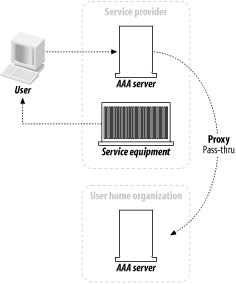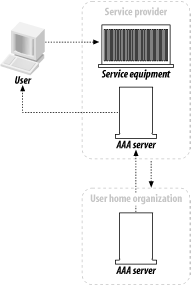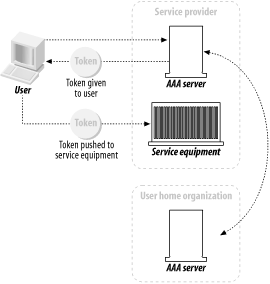Roaming
To add an interesting twist to the progression, let’s talk about roaming. The examples I’ve presented thus far assume that the service equipment and AAA server are all under the direct control and ownership of a single entity, the user’s home organization (UHO). But what happens when the service equipment is owned and operated by another organization? This model is called roaming, and the Roaming Operations Working Group (Roamops) has been formed to explore this situation. Roaming is actually quite common: revisiting an earlier example, a user connecting to a set of dial-up ports that his ISP is renting from a larger service provider is roaming, since the service equipment is in another provider’s domain.
The same combinations of authorization sequences—agent, push, and pull—are possible with roaming. Figure 1-6 through Figure 1-8 depict typical roaming authorization sequences.
 |
 |
 |
Get RADIUS now with the O’Reilly learning platform.
O’Reilly members experience books, live events, courses curated by job role, and more from O’Reilly and nearly 200 top publishers.

